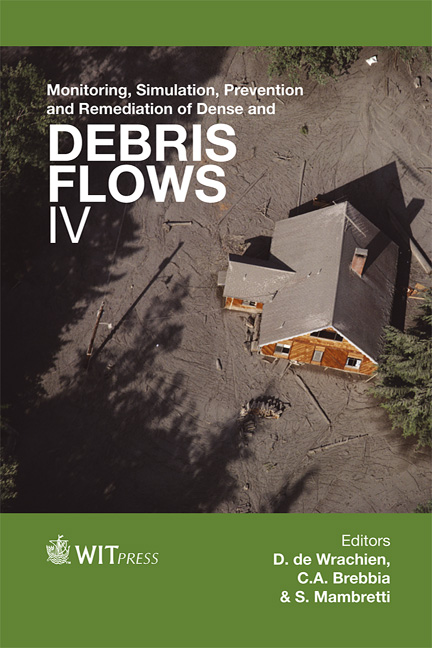Hot Pyroclastic Deposit As Lahar Resistor: A Case Study Of Gendol River After The Mt. Merapi 2010 Eruption
Price
Free (open access)
Transaction
Volume
73
Pages
13
Page Range
97 - 109
Published
2012
Size
2,794 kb
Paper DOI
10.2495/DEB120091
Copyright
WIT Press
Author(s)
S. Sandy Putra, C. Hassan & S. Hariyadi
Abstract
Hot pyroclastic deposit as lahar resistor: a case study of Gendol River after the Mt. Merapi 2010 eruption S. Sandy Putra, C. Hassan & S. Hariyadi Research Centre for Water Resources, Indonesia Abstract The year 2010 left unforgettable memories for Indonesian people because of the Mega Eruption of Mt. Merapi, which was predicted as the biggest eruption since 1870. Lahar became a dangerous secondary hazard around the Mt. Merapi watershed. The lahar event record until February 2011 in Gendol Watershed showed less instances of lahar occurrence compared with other areas, such as River Putih WS (>10 events), River Apu WS (>5 events), etc. This paper provides literature analysis, stratigraphy study analysis, and also temperature measurement reports, in association with lahar triggered factors in the Gendol Watershed. Previous stratigraphy survey data on Gendol River (Newhall et al., Journal of Volcanology and Geothermal Research, 2000) shows that the pyroclastic deposit material allows water infiltration because of its porosity. The conditions of a deep clay (impermeable) layer and no water table found up to ±11m depth support rain water infiltration. The post eruption pyroclastic deposit is still at a high temperature (±105°C), which causes some infiltrated water to be evaporated. Less runoff will promote a smaller amount of sediment transport and less risk and lower destructive force of a lahar event. Over a sufficient period, the pyroclastic deposit will be consolidated and compacted as a result of the cementation process of active pyroclastic elements (solidified by chemical bonding). Hot pyroclastic material in the Gendol River after the Mount Merapi Eruption 2010 could have acted as a resistor for lahar. The resist period was ±145 days, from the first eruption until the significant lahar event. The influential resistance factors are thickness, density, porosity, riverbed gradient, rain intensity, and temperature of the pyroclastic deposit. It gives enough time for urgent action (human relocation), environment mitigation, reconstruction, and remediation in the watershed. This fact was the empirical basis for the
Keywords
Merapi, eruption 2010, pyroclastic, temperature, lahar resistor





